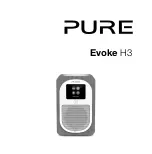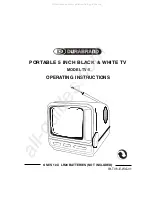
Engine Maintenance
93
Antifreeze Maintenance
Procedure
Regular inspection is required to verify the
condition of the antifreeze. Inhibitors become
worn out and must be replaced by changing the
antifreeze. The inhibitors in Extended Life
Coolant (ELC) antifreeze (red color) extend
change intervals to 5 years or 12,000 hours.
Do not mix green or blue-green engine coolant
with ELC (red) engine coolant. See “ELC
(Extended Life Coolant)” on page 91 for more
information about ELC.
ELC coolants are available in 100 percent full
strength concentrate or (pre-mixed) 50/50 percent
mixture. Thermo King recommends the use of
50/50 percent pre-mixed ELC antifreeze to assure
that de-ionized water is used. 100 percent
concentrate extended life coolant must be mixed
with de-ionized or distilled water (NOT tap water)
to ensure cooling system integrity.
NOTE: See Specifications chapter for coolant
capacity and correct type of antifreeze for your
unit.
When changing antifreeze, drain, flush and
replace the total antifreeze mixture to maintain
total cooling system protection. To prevent
mineral scale, use water with a total hardness
under 170 ppm. If the total water hardness is over
170 ppm, soften the water or use distilled water.
The water must also be de-mineralized,
de-ionized or distilled if it does not meet the
following requirements: chlorides concentration
under 40 ppm, sulfates concentration under 100
ppm and total dissolved solids under 340 ppm.
The factory recommends the use of a 50/50
antifreeze/water mixture in all units. Even if they
are not exposed to freezing temperatures. A 50/50
antifreeze mixture will provide the required
corrosion protection and lubrication for the water
pump.
Checking the Antifreeze
Check the solution concentration by using a
temperature compensated antifreeze hydrometer
or a refractometer designed for testing antifreeze.
A refractometer works with both ELC and
conventional antifreeze. Maintain a minimum of
50 percent permanent type antifreeze concentrate
and 50 percent water solution to provide
protection to -34 C (-30 F). Do not mix antifreeze
stronger than 68 percent permanent type coolant
concentrate and 32 percent water for use in
extreme temperatures.
Changing the Antifreeze
1. Operate the engine until it is up to operating
temperature. Then stop the unit.
2. Open the engine block drain and completely
drain coolant. Observe coolant color. If the
coolant is dirty, proceed with a, b, and c.
Otherwise go to step 3.
a. Pour clear water into radiator and allow it
to drain out of the block until it is clear.
b. Close the block drain and install a
commercially available radiator and block
flushing agent. Operate the unit in
accordance with instructions of the
flushing agent manufacturer.
c. Open the engine block drain to drain water
and flushing solution.
3. Pour clear water into the radiator. Allow it to
drain out of the block until it is clear.
4. Inspect all the hoses for deterioration and the
hose clamps for tightness. Replace if
necessary.
5. Loosen the water pump belt. Check the water
pump bearing for looseness and retighten the
belt (See “Belt Tension Adjustment and Belt
Replacement” in this chapter).
6. Inspect the radiator cap. Replace the cap if the
gasket shows any signs of deterioration.
WARNING: Avoid direct contact with hot
coolant.
Содержание SGCO 3000
Страница 4: ......
Страница 12: ...SGCO 3000 Genset Addendum 12...
Страница 14: ...Genset Model Features 14...
Страница 22: ...Service Guide 22...
Страница 32: ...Unit Description Features Options 32...
Страница 78: ...Operating Instructions 78...
Страница 86: ...Electrical Maintenance 86...
Страница 114: ...Engine Maintenance 114...
Страница 124: ...Alternator Operation and Diagnosis 124...
Страница 130: ...Structural Accessory Maintenance 130...
Страница 138: ...Index 138...
Страница 140: ...Electrical and SG Menu Flow Diagrams 140...
Страница 141: ...141 SGCO 3000 Wiring Diagram Page 1 of 1...
Страница 142: ...142 SGCO 3000 Schematic Diagram Page 1 of 1...
















































